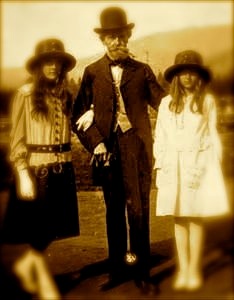Photography
The other day, my wife, Linda, was rummaging through an old box of photos with my mother, age 95, and our little niece, Jaclyn, age 7. Our niece noticed a stack of black and white negatives in the box and asked, “What’s that?” Linda tried to explain, but I don’t think it was very meaningful to her.
This incident got me to thinking about how much photography has changed over the years.



When I was in the service in Furth, Germany, I discovered that the kasern had a photo lab open to the military men. It was a self-serve type of lab, and I quickly learned that the process for developing and printing black and white film and prints was extremely easy.


I recently took a photo of myself which I manipulated with my computer photo program which for a moment gave me hope that I had suddenly developed superior skills as a photographer. After a moment of exhilaration, I came back to reality realizing that between digital cameras and computer programs which allow extensive manipulation, that anyone can make pretty impressive photos today.

Once I was finally relieved of my duties as sponsor of the yearbook, and I realized that I wasn’t a talented photographer, and the fact that Linda actually enjoys taking photos, I gave it up. Occasionally I’m called into service by someone with a camera who wants to be in the photograph.


In case you’re interested, here are few highlights of the history of photography:
1822- Nicephore Niepce takes the first fixed,
permanent photograph
1839- Louis Daguerre patents the daguerreotype
William Talbot invented the positive/negative
process widely used in modern photography
John Herschel makes first glass negative
1861- James Maxwell introduced the first
color photograph
1871- Eadweard Muybridge makes first
high-speed photographs
1887- Celluloid film base was introduced
1888- Kodak box camera was mass marketed
1989- Kodak introduced folding pocket camera
1900- Kodak introduced first Brownie
1902- Wire-Photos first introduced (photographic
images transmitted by wire)
1907- the first color photography process marketed
1912- Kodak introduced Vest Pocket Kodak
1920- Yasujiro Niwa invented phototelegraphic
transmission through cable and later via radio
1926- Leica introduced 35mm format
1935- film cartridge introduced making 35mm
film easy to use
1948- Edwin Land introduced the first Polaroid
instant image system
1957- first digital image produced on a computer
1973- Fairchild Semiconductor released the first
large image forming CCD chip
1986- Kodak invents world’s first megapixel sensor
2000- first commercially available camera integrated
with mobile phone
2005- AgfaPhoto files for bankruptcy
2008- Polaroid discontinues instant film products
2009- Kodak discontinues Kadachrome film

enough





